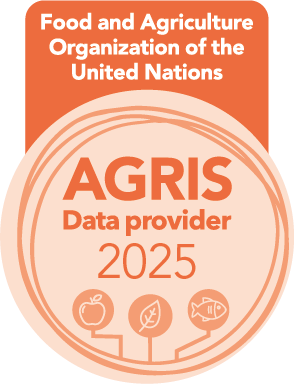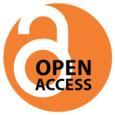Effect of maternal vaccination on the occurrence of orofacial cleft in children
DOI:
https://doi.org/10.54393/df.v2i2.20Keywords:
Orofacial cleft, vaccination, slow growth, eatingAbstract
An orofacial cleft is one of the major genetic disorders in children that can occur due to various malpractices and negligence by mothers during the gestational period towards factors crucial for giving birth to a healthy infant. One of these factors includes incomplete vaccination during pregnancy which can lead to the malformation of the oral cavity. Children with orofacial cleft suffer from multiple problems, especially in eating and encounter a slow growth rate along with the inability to perform competently in doing physical activity and other social aspects. Objective: To evaluate the effect of vaccination on the occurrence of an orofacial cleft in children. Methods: A sample of 100 children aged between 1-12 years using non-probability sampling was selected from 2 hospitals in Lahore, Pakistan. A pre-tested questionnaire was used to gather information and data was analyzed by using SPSS version 21.0. Results: Mothers of 60% of children suffering from orofacial cleft did not get vaccinated during pregnancy whereas more than 50% of affected children were having slow growth according to their age along with facing problems in eating and normal food intake. Conclusion: The effect of maternal vaccination on the occurrence of an orofacial cleft in children is quite clear. Orofacial cleft also significantly affects the lives of children by declining their growth and overall personal and social life activities.
References
Hviid A, Mølgaard-Nielsen D. Corticosteroid use during pregnancy and risk of orofacial clefts. Canadian Medical Association Journal. 2011 Apr 19; 183(7):796-804. doi: 10.1503/cmaj.101063.
Tanaka SA, Mahabir RC, Jupiter DC, Menezes JM. Updating the epidemiology of cleft lip with or without cleft palate. Plastic and reconstructive surgery. 2012 Mar 1;129(3):511e-8e. doi: 10.1097/PRS.0b013e3182402dd1.
Elahi MM, Jackson IT, Elahi O, Khan AH, Mubarak F, Tariq GB, Mitra A. Epidemiology of cleft lip and cleft palate in Pakistan. Plastic and reconstructive surgery. 2004 May 1;113(6):1548-55. doi: 10.1097/01.prs.0000117184.77459.2b.
Little J, Cardy A, Munger RG. Tobacco smoking and oral clefts: a meta-analysis. Bulletin of the World Health Organization. 2004;82:213-8.
Honein MA, Rasmussen SA, Reefhuis J, Romitti PA, Lammer EJ, Sun L, Correa A. Maternal smoking and environmental tobacco smoke exposure and the risk of orofacial clefts. Epidemiology. 2007 Mar 1:226-33. doi: 10.1097/01.ede.0000254430.61294.c0.
Yazdy MM, Autry AR, Honein MA, Frias JL. Use of special education services by children with orofacial clefts. Birth Defects Research Part A: Clinical and Molecular Teratology. 2008 Mar 1;82(3):147-54. doi: 10.1002/bdra.20433.
Dixon MJ, Marazita ML, Beaty TH, Murray JC. Cleft lip and palate: understanding genetic and environmental influences. Nature Reviews Genetics. 2011 Mar;12(3):167-78. doi: 10.1038/nrg2933
Molnárová A, Palenčár D, Fekiačová D, Bieliková E, Tichá E, Ujházy E. Orofacial clefts and infections during pregnancy. Biologia. 2018 Jun;73(6):629-35.
Dymanus K, Chishom T, Moraczewski J, Carroll W, Lima M, Yu JC, et al., The association between influenza infection rates and the incidence of orofacial clefts in the United States. FACE. 2021 Mar;2(1):23-9.
Mbuyi-Musanzayi S, Kayembe TJ, Kashal MK, Lukusa PT, Kalenga PM, et al., Non-syndromic cleft lip and/or cleft palate: Epidemiology and risk factors in Lubumbashi (DR Congo), a case-control study. Journal of Cranio-Maxillofacial Surgery. 2018 Jul 1;46(7):1051-8. doi: 10.1016/j.jcms.2018.05.006.
Jin LJ, Lamster IB, Greenspan JS, Pitts NB, Scully C, Warnakulasuriya S. Global burden of oral diseases: emerging concepts, management and interplay with systemic health. Oral diseases. 2016 Oct 1;22(7):609-19. doi: 10.1111/odi.12428.
Margulis AV, Mitchell AA, Gilboa SM, Werler MM, Mittleman MA, Glynn RJ, Hernandez-Diaz S. Use of topiramate in pregnancy and risk of oral clefts. American Journal of Obstetrics & Gynecology. 2012 Nov 1;207(5):405.e1-7. doi: 10.1016/j.ajog.2012.07.008.
Miranda GS, Marques IL, De Barros SP, Arena EP, De Souza L. Weight, length, and body mass index growth of children under 2 years of age with cleft lip and palate. The Cleft Palate-Craniofacial Journal. 2016 May;53(3):264-71. doi: 10.1597/14-003.
Werler MM, Ahrens KA, Bosco JL, Mitchell AA, Anderka MT, Gilboa SM, Holmes LB. Use of antiepileptic medications in pregnancy in relation to risks of birth defects. Annals of epidemiology. 2011 Nov 1;21(11):842-50. doi: 10.1016/j.annepidem.2011.08.002.
Duarte GA, Ramos RB, Cardoso MC. Feeding methods for children with cleft lip and/or palate: a systematic review. Brazilian journal of otorhinolaryngology. 2016 Sep 1;82(5):602-9. doi: 10.1016/j.bjorl.2015.10.020.
Letelier Campillay P, Delgado SE, Brescovici SM. Evaluation of feeding in children with cleft lip and / or palate treated at a hospital in Porto Alegre. Revista CEFAC. 2010; 12 (2).
Clarren SK, Anderson B, Wolf LS. Feeding infants with cleft lip, cleft palate, or cleft lip and palate. The Cleft palate journal. 1987 Jul 1;24(3):244-9.
Taghavi N, Mollaian M, Alizadeh P, Moshref M, Modabernia S, Akbarzadeh AR. Orofacial clefts and risk factors in tehran, iran: a case control study. Iranian Red Crescent Medical Journal. 2012 Jan;14(1):25-30.
Knight J, Cassell CH, Meyer RE, Strauss RP. Academic outcomes of children with isolated orofacial clefts compared with children without a major birth defect. The Cleft Palate-Craniofacial Journal. 2015 May;52(3):259-268. doi: 10.1597/13-293
Collett BR, Cloonan YK, Speltz ML, Anderka M, Werler MM. Psychosocial functioning in children with and without orofacial clefts and their parents. The Cleft palate-craniofacial journal. 2012 Jul;49(4):397-405. doi: 10.1597/10-007.
de Vries IA, Breugem CC, van der Heul AM, Eijkemans MJ, Kon M, van der Molen AM. Prevalence of feeding disorders in children with cleft palate only: a retrospective study. Clinical oral investigations. 2014 Jun 1;18(5):1507-15. doi: 10.1007/s00784-013-1117-x.
Källén B, Olausson PO. Vaccination against H1N1 influenza with Pandemrix® during pregnancy and delivery outcome: a Swedish register study. BJOG: An International Journal of Obstetrics & Gynaecology. 2012 Dec;119(13):1583-90. doi: 10.1111/j.1471-0528.2012.03470.x.
Duarte GA, Ramos RB, Cardoso MC. Feeding methods for children with cleft lip and/or palate: a systematic review. Brazilian journal of otorhinolaryngology. 2016 Sep;82:602-9. doi: 10.1016/j.bjorl.2015.10.020.
Downloads
Published
How to Cite
Issue
Section
License
Copyright (c) 2021 DIET FACTOR (Journal of Nutritional & Food Sciences)

This work is licensed under a Creative Commons Attribution 4.0 International License.
This is an open-access journal and all the published articles / items are distributed under the terms of the Creative Commons Attribution License, which permits unrestricted use, distribution, and reproduction in any medium, provided the original author and source are credited. For comments












